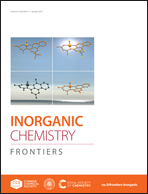Mo6+–P5+ co-doped Li2ZnTi3O8 anode for Li-storage in a wide temperature range and applications in LiNi0.5Mn1.5O4/Li2ZnTi3O8 full cells†
Abstract
A one-step solid-state method has been used to synthesize Li2ZnTi3O8 (LZTO) co-doped with Mo6+ and P5+ ions (LZM7TP3O). The structural stability, pore size and specific surface area have been improved via this strategy. In addition, LZM7TP3O has high ionic and electronic conductivities, and small transfer resistance. So, this co-doping strategy tremendously enhances the electrochemical performance of LZM7TP3O in a wide temperature range. No capacity fading occurs for LZM7TP3O after cycling for 600 cycles at 25 °C, based on the 2nd cycle at 1 A g−1. 180.5 mA h g−1 is still kept at 3 A g−1 for the 120th cycle. No capacity decay occurs for LZM7TP3O after cycling for 100 cycles at 55 °C, relative to the 2nd cycle at 1 A g−1. At 0 °C, there is no capacity lost after cycling for 1000 cycles at 0.5 A g−1, relative to the 2nd cycle. At 0.5 C, the initial discharge specific capacity of the LiNi0.5Mn1.5O4/LZM7TP3O full cell can reach 214.3 mA h g−1 in 2–4.55 V, when LZM7TP3O is used as the anode of the full cell. Moreover, the full cell can power red, green and blue light emitting diode (LED) bulbs. The results indicate that LZM7TP3O is an appealing anode for lithium-ion batteries.



 Please wait while we load your content...
Please wait while we load your content...